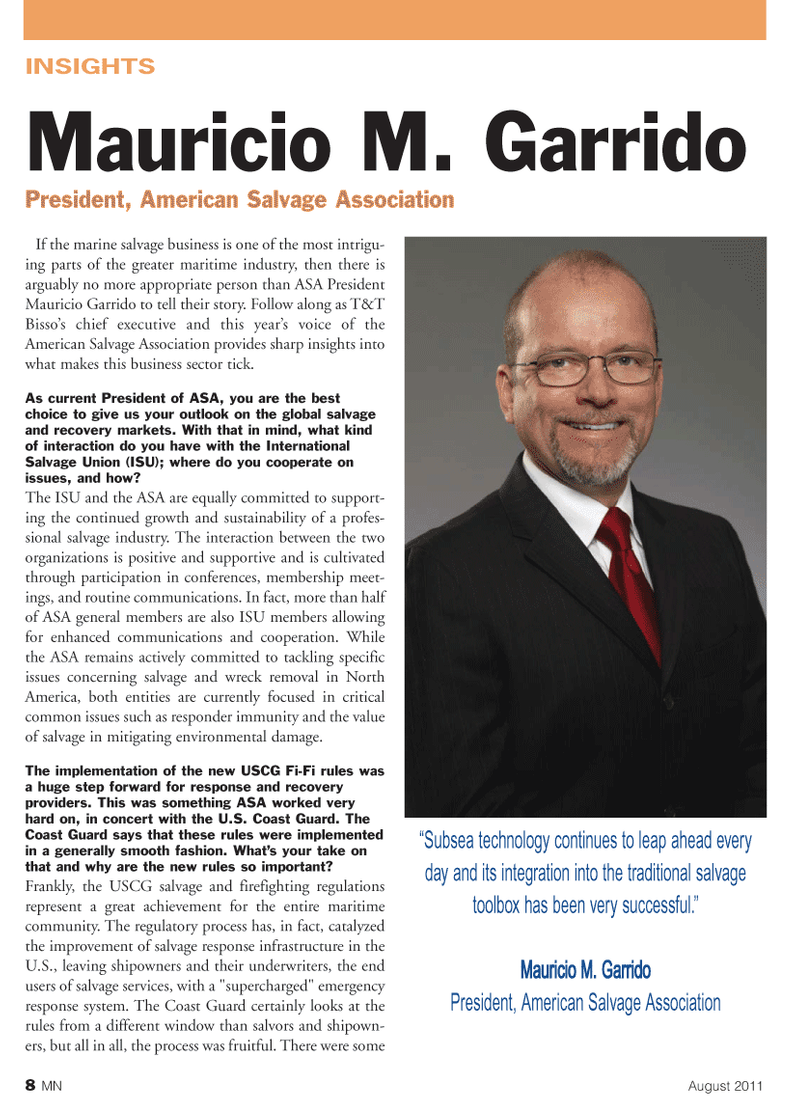
Page 8: of Marine News Magazine (August 2011)
Marine Salvage & Recovery Edition
Read this page in Pdf, Flash or Html5 edition of August 2011 Marine News Magazine
If the marine salvage business is one of the most intrigu- ing parts of the greater maritime industry, then there is arguably no more appropriate person than ASA President Mauricio Garrido to tell their story. Follow along as T&T Bissos chief executive and this years voice of the American Salvage Association provides sharp insights into what makes this business sector tick.As current President of ASA, you are the best choice to give us your outlook on the global salvageand recovery markets. With that in mind, what kind of interaction do you have with the InternationalSalvage Union (ISU); where do you cooperate on issues, and how?The ISU and the ASA are equally committed to support- ing the continued growth and sustainability of a profes- sional salvage industry. The interaction between the two organizations is positive and supportive and is cultivated through participation in conferences, membership meet- ings, and routine communications. In fact, more than half of ASA general members are also ISU members allowing for enhanced communications and cooperation. While the ASA remains actively committed to tackling specific issues concerning salvage and wreck removal in North America, both entities are currently focused in critical common issues such as responder immunity and the value of salvage in mitigating environmental damage. The implementation of the new USCG Fi-Fi rules wasa huge step forward for response and recovery providers. This was something ASA worked very hard on, in concert with the U.S. Coast Guard. The Coast Guard says that these rules were implemented in a generally smooth fashion. Whats your take on that and why are the new rules so important? Frankly, the USCG salvage and firefighting regulations represent a great achievement for the entire maritime community. The regulatory process has, in fact, catalyzed the improvement of salvage response infrastructure in the U.S., leaving shipowners and their underwriters, the end users of salvage services, with a "supercharged" emergency response system. The Coast Guard certainly looks at the rules from a different window than salvors and shipown- ers, but all in all, the process was fruitful. There were some INSIGHTSMauricio M. GarridoPresident, American Salvage Association 8MNAugust 2011Subsea technology continues to leap ahead every day and its integration into the traditional salvage toolbox has been very successful.? Mauricio M. GarridoPresident, American Salvage Association

 7
7

 9
9
